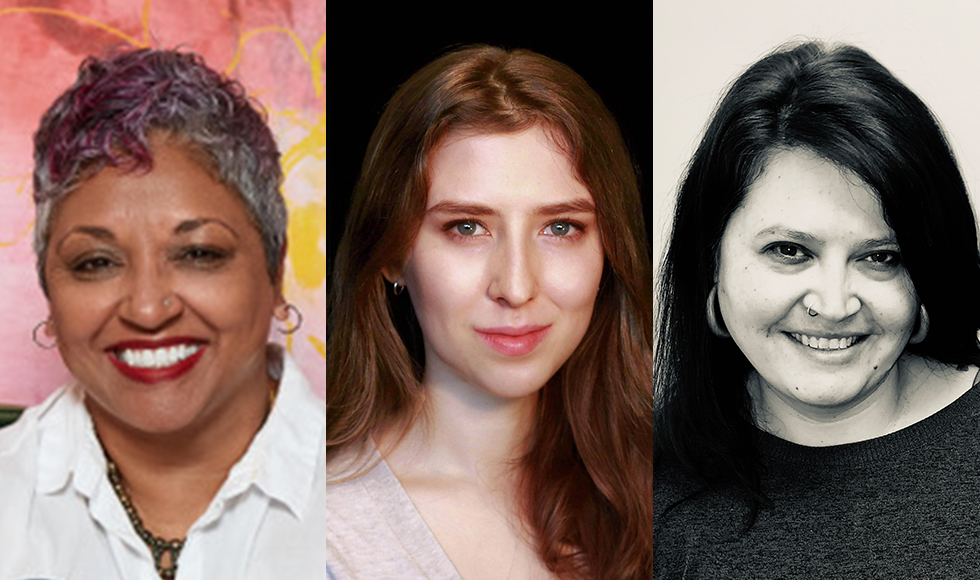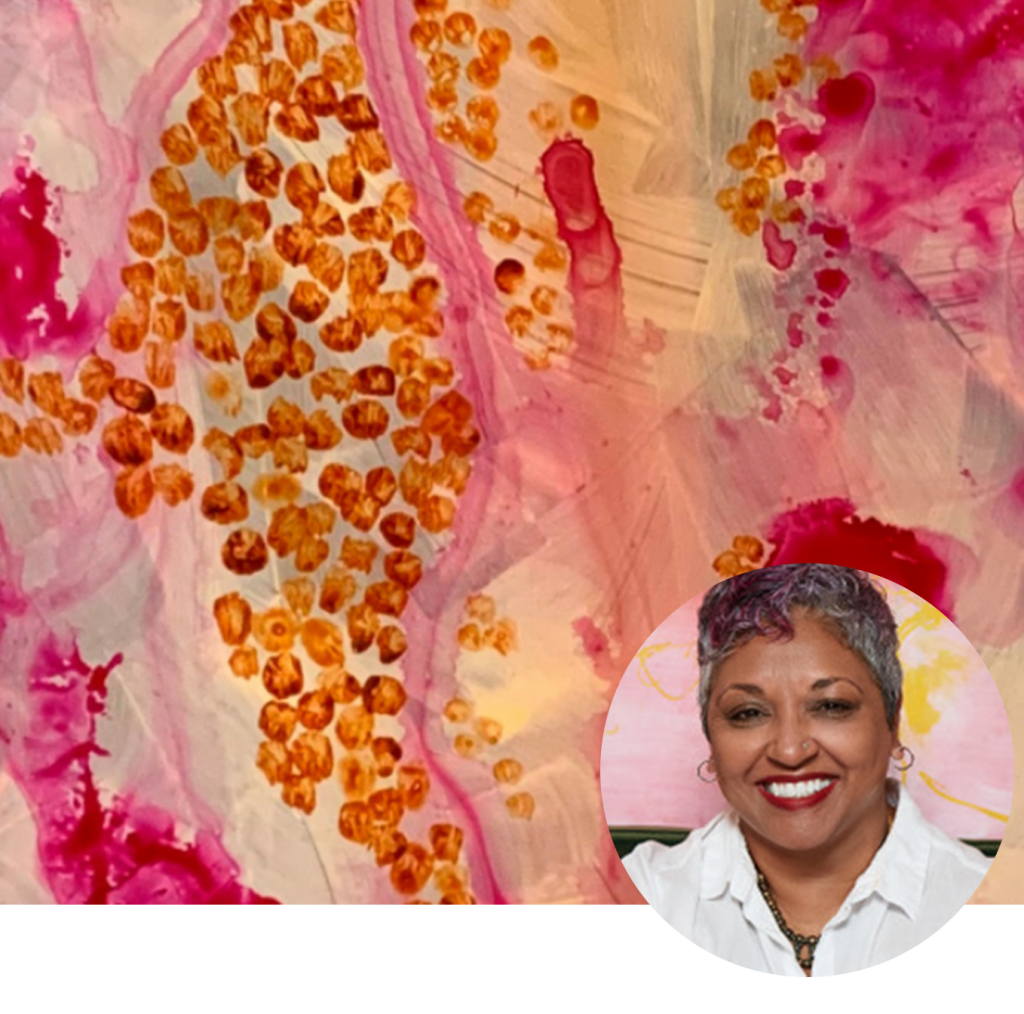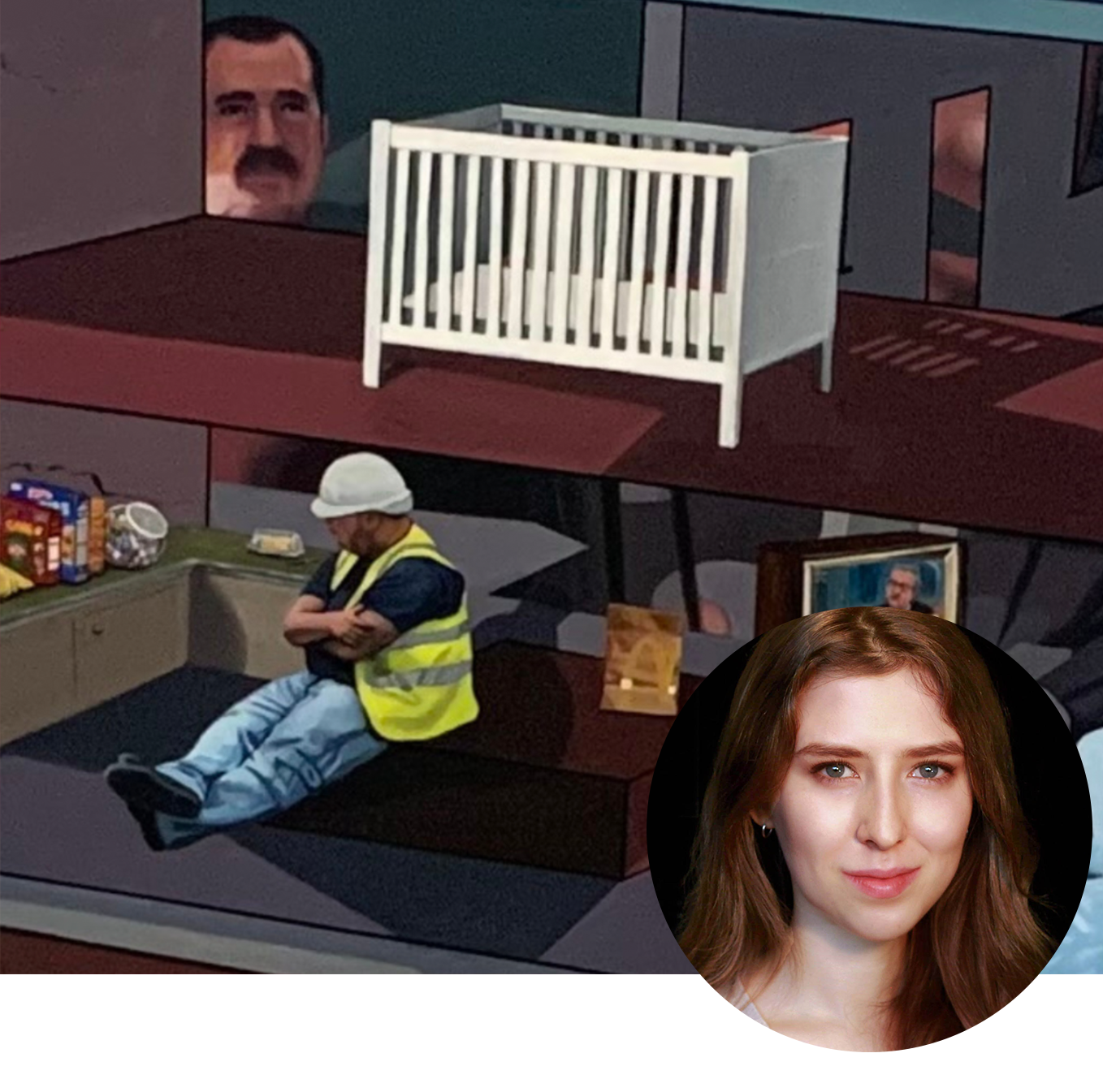Mac grads headline new exhibition at the Art Gallery of Hamilton

McMaster alumni Ravinder Ruprai, Jill Letten and Vanessa Crosbie Ramsay
A McMaster-led exhibition on display at The Art Gallery of Hamilton is channelling art to explore pregnancy-related science.
The Art of Creation, on now until November 30, is the culmination of an innovative knowledge-translation initiative led by Biochemistry and Biomedical Sciences professor Deborah Sloboda.
Sloboda invited local artists into her laboratory and challenged them to portray what they saw in a way that would resonate with the public, with policymakers and with social and health care workers.
Among the artists-in-residence were Ravinder Ruprai, Jill Letten and Vanessa Crosbie Ramsay — three proud McMaster alumni who all rejoiced at the opportunity to return to campus.
Here, these Mac grads reflect on their experience participating in the Art of Creation and highlight the works that they will showcase at the exhibition.
Ravinder Ruprai, Fine Arts (Class of 1993)
Thirty years after graduating from McMaster’s Fine Arts program, Ravinder Ruprai returned to her alma mater to continue her artistic journey.
“It was so great to be back on campus,” she says. “Returning to McMaster filled me with that same energy that I had when I was an undergrad. I have so many good memories from my time as a student there.”

Ruprai says she had never been in a research lab prior to joining The Art of Creation project, but that she was overcome with inspiration from the moment she walked in.
“The first thing that hit me when I entered was the sheer number of slides,” she says. “They were everywhere — just about everything was done on microscopic slides. I knew right away that I wanted to take inspiration from that and work on something that involved these slides.”
Her work for The Art of Creation — The Body Remembers — does just that. Ruprai had a local company cut and miter plexiglass so that it proportionally reflected the slides she saw in the lab. She used the plexiglass as a canvas, developing five slides in total — each one depicting important maternal health themes, including red blood cells, placenta and medical records.
While Ruprai considers herself “mainly a painter,” she is proud to have explored new materials for this work. Beyond the plexiglass, she also used wools, nylons, “and other materials historically used by women.”
Ruprai believes that her work — and The Art of Creation exhibit more broadly — will help people understand the complex notions of early-origins science.
“With art, people tend to have visceral responses — it can challenge us to look deeper into the meaning of the work,” she says. “This entire exhibit is designed to bring art together with science for exactly that reason.”
Jill Letten, Fine Arts (Class of 2021)
While Jill Letten had some experience integrating research and art prior to joining The Art of Creation, she says she’d never blended both worlds quite like this.
“This was easily one of the most unique projects that I’ve ever participated in,” she says.

Letten says visiting the lab for demonstrations from scientists and discussions with other artists was not only the highlight of her time with The Art of Creation, but also the foundation of her art piece for the project.
She says her art was directly inspired by a phrase she heard in the lab: ‘a poor start to life builds a house of poor materials.’
The expression, she says, sparked the idea to focus on construction as a metaphor for maternal health, in that bodily structures, if not properly constructed — or “built to code” — can lead to complications during pregnancy and increase the risk of a child not being able to withstand life’s challenges.
Titled Policy Play, Letten says the work critically explores the vital role that policymakers can play in the construction of maternal health, and she hopes that it being on display in The Art Gallery of Hamilton will spur positive change and new resources for women’s health.
“I’m really hoping people see this work and take something away from it,” she says. “I hope they get inspired and become advocates for early-origins science and resource implementation.”
Vanessa Crosbie Ramsay, Gender Studies & Feminist Research M.A. (Class of 2021)
When filmmaker Vanessa Crosbie Ramsay began working with The Art of Creation, she naturally assumed her installment for the project would be video-related; however, as she immersed herself in the Sloboda Lab, she became more and more fixated on the materials and processes used by researchers.
Of particular interest for Crosbie Ramsay was agar, a culture medium used by researchers to support the growth of microorganisms and cells.

“For my piece, I used an agar mixture in Petri dishes — just like they do in the lab,” she says. “I incubated it until it solidified, popped it out into the world, aged it over time, and developed a sculpture using the dried agar pieces.”
While the year-long process was entirely new for Crosbie Ramsay, she says her inspiration was organic and her experience in the lab felt natural.
“I don’t think art and science are as opposite as they might seem,” she explains. “There is creativity in science, and there is scientific method in art.”
Crosbie Ramsay is excited to debut her sculpture at the Art Gallery of Hamilton later this month, and she is similarly looking forward to taking in the works of her Art of Creation peers.
The entire exhibit, she says, will help deliver a “deeper, greater, and different understanding” of the issues central to early-origins science.
“Art is an amazing way to translate difficult concepts,” she says. “It lets people live in the questions — it doesn’t necessarily answer the questions for them, but it can absolutely make the invisible more visible for a lot of people.”
Follow The Art of Creation and the Sloboda Lab on Instagram to learn more.


